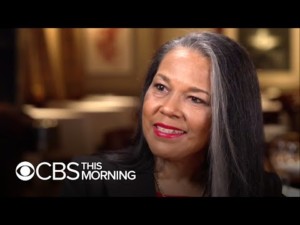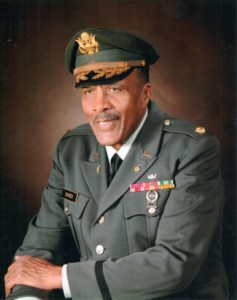How the U.S. Navy’s First Black Officers Helped Reshape the American Military
Image: U.S. Navy bombers in flight over their carrier, circa 1944, the year the first African-American sailors were selected for the Navy’s Officer Candidate School. (Getty Images)
(Time.com) This year marks the 75th anniversary of the United States victory over Germany and Japan in World War II, and the celebrations, the movies and the memorials will focus on the battlefields of Europe and the Pacific. But one of the most consequential battles of the war did not take place overseas. It was waged about 35 miles north of Chicago—and its outcome forever changed the U.S. Navy.
In early 1944, as the United States prepared for the invasion of France, 16 African American sailors, summoned from shore installations and training schools across the country, were brought to the main office at Great Lakes Naval Training Center and told they had been selected for Officer Candidate School.
It was a startling assignment.
A black man had graduated from the United States Military Academy at West Point in 1877 and the Army had its first black general in 1940. But when World War II began, African Americans were not even allowed to enlist in the Navy’s general service. (more)
- Related literature: “The Golden Thirteen, How Black Men Won the Right to Wear Navy Gold,” by Dan Goldberg. The story of the 13 courageous black men who integrated the officer corps of the US Navy during World War II—leading desegregation efforts across America and anticipating the civil rights movement
- Also, PVAMU was the first HBCU to house both Army and Navy ROTC programs simultaneously.
Mabel O. Wilson is Updating the Narrative of American Architecture to Include Black Architects
A new book, an upcoming MoMA exhibition, and a recently completed memorial are informed by the Columbia University professor’s unflinching critique of traditional architectural pedagogy.
(Metropolismag.com) Now is an important time to catch up with architect Mabel O. Wilson. The Nancy and George Rupp Professor of Architecture, Planning and Preservation at Columbia University is involved in multiple projects that hold the potential to change the way architectural history is being taught and to revise the methods traditionally used to record it. Her scholarship is chiefly aimed at repairing America’s incomplete narrative on African-American contributions to the built environment, and as public discourse on social justice expands, so does her audience: Her latest insights informed the University of Virginia’s Memorial to Enslaved Laborers, which she helped Höweler + Yoon design; she coedited the book Race and Modern Architecture: A Critical History from the Enlightenment to the Present with Charles L. Davis II and Irene Cheng; and she is currently at work on the upcoming MoMA exhibition Reconstructions: Architecture and Blackness in America, which she is co-curating with the museum staff.
Fellow architect Kimberly Dowdell, president of the National Organization of Minority Architects, spoke with Wilson about these moves and American architectural pedagogy. Metropolis listened in. (more)
Image: (Wilson) is currently co-curator of the exhibition “Reconstructions: Architecture and Blackness in America,” slated to open later this year at the Museum of Modern Art. (Courtesy Germane Barnes/The Museum of Modern Art)
The Dish: African American history captured in Toni Tipton’s cookbook, “Jubilee”
(CBSNews.com) A special edition of The Dish looks back at a culinary event held at New York’s Gramercy Tavern — Chef Toni Tipton offered guests a taste of African American culinary history with a Jubilee, featuring recipes from her cookbook, “Jubilee: Recipes from Two Centuries of African American Cooking: A Cookbook,” that includes foods that have been centuries in the making. Tipton speaks to Michelle Miller about African American history through the lens of flavorful, unique cuisine.
Video: 6 minutes
Click here for Toni Tipton-Martin’s “Jubilee, Recipes From Two Centuries of African American Cooking: A Cookbook.”
TIPHC Bookshelf
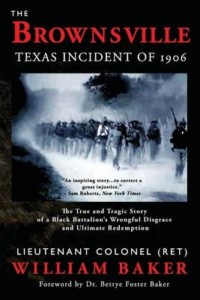 Published scholarship on black history in Texas is growing and we’d like to share with you some suggested readings, both current and past, from some of the preeminent history scholars in Texas and beyond. We invite you to take a look at our bookshelf page – including a featured selection – and check back as the list grows. A different selection will be featured each week. We welcome suggestions and reviews. This week, we offer, “The Brownsville Texas Incident of 1906: The True and Tragic Story of a Black Battalion’s Wrongful Disgrace and Ultimate Redemption,” by William Baker, Lt.Col. (Ret.).
Published scholarship on black history in Texas is growing and we’d like to share with you some suggested readings, both current and past, from some of the preeminent history scholars in Texas and beyond. We invite you to take a look at our bookshelf page – including a featured selection – and check back as the list grows. A different selection will be featured each week. We welcome suggestions and reviews. This week, we offer, “The Brownsville Texas Incident of 1906: The True and Tragic Story of a Black Battalion’s Wrongful Disgrace and Ultimate Redemption,” by William Baker, Lt.Col. (Ret.).
In 1906 President Theodore Roosevelt summarily discharged 167 black soldiers of the 25th Infantry without honor, without trial and without due process. It was the only instance of mass punishment in the history of the regular U.S. Army. The men were, in fact, innocent of any wrongdoing in what became known as the Brownsville (TX) Incident. Yet they had to live the rest of their lives with the shame and disgrace leveled upon them.
In his memoir, “The Brownsville Texas Incident of 1906: The True and Tragic Story of a Black Battalion’s Wrongful Disgrace and Ultimate Redemption,” Lieutenant Colonel (ret) William Baker, tells the story of his quest to unearth the powerful and compelling evidence that would eventually exonerate those falsely accused men and give them the justice that had eluded them for more than 67 years.
Through the words of the lone survivor, Dorsie Willis, “That dishonorable discharge kept me from Improving my station in life,” he told the New York Times in 1977. “God knows what it did to the others.”
In the late 1930s, in rural Georgia, a former slave told his grandson a story about a case of racial injustice that had occurred three decades earlier and gone all the way to the White House.
The story began about midnight on Aug. 13, 1906, when a flurry of gunfire erupted on a street in Brownsville, Tex., leaving a white bartender dead and a white police lieutenant wounded.
Soon, the city’s mayor and other white citizens had accused about 20 unidentified black soldiers stationed nearby, at Fort Brown, of having shot up the town. (more)
This Week in Texas Black History
May 17
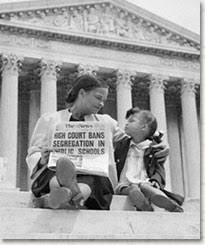 The U.S. Supreme Court, on this day in 1954, handed down its landmark decision in Brown v. Board of Education declaring segregation in public schools to be unconstitutional. The court had consolidated five cases dealing with racial segregation in public schools (in Kansas, Delaware, the District of Columbia, South Carolina, and Virginia) under one name, Oliver Brown et al. v. the Board of Education of Topeka. Oliver Brown brought the case against the Topeka, Kan. Board of Education because his daughter, Linda, in third grade, had to cross railroad tracks and ride a school bus 21 blocks to a black school, even though there was a white school only five blocks away from her home. The court ruled unanimously that “separate educational facilities are inherently unequal.” The 1946 Heman Sweatt case against the University of Texas School of Law was a precedent for the ruling.
The U.S. Supreme Court, on this day in 1954, handed down its landmark decision in Brown v. Board of Education declaring segregation in public schools to be unconstitutional. The court had consolidated five cases dealing with racial segregation in public schools (in Kansas, Delaware, the District of Columbia, South Carolina, and Virginia) under one name, Oliver Brown et al. v. the Board of Education of Topeka. Oliver Brown brought the case against the Topeka, Kan. Board of Education because his daughter, Linda, in third grade, had to cross railroad tracks and ride a school bus 21 blocks to a black school, even though there was a white school only five blocks away from her home. The court ruled unanimously that “separate educational facilities are inherently unequal.” The 1946 Heman Sweatt case against the University of Texas School of Law was a precedent for the ruling.
May 20
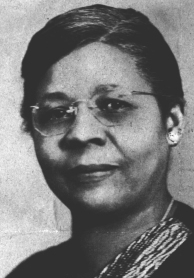
On this day in 1881, Mary Elizabeth Branch was born to a family of former slaves near Farmville, Virginia. Branch received a bachelor’s degree in 1922 and a master’s degree in English in 1925, both from the University of Chicago. In 1930, the American Missionary Association appointed her president of Tillotson College in Austin, making her the first woman to head an accredited college in Texas. Under her direction the college’s facilities were improved, the library’s holdings were expanded, and the faculty size doubled. She also permitted the organization of fraternities and sororities, and encouraged the formation of academic and athletic clubs. In 1944, Branch helped to establish the United Negro College Fund.
May 21
On this day in 2005 Dallas civic leader Samuel William Hudson, Jr. passed away. Hudson was the city’s first African American to serve on a grand jury. As a civil rights activist, his efforts lead to the desegregation of Southern Methodist University’s School of Theology and the admittance of black patients to Methodist Hospital. Hudson graduated from Bishop College and was the father of former State Representative Sam Hudson, III.
May 22
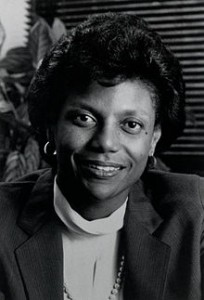
Marguerite Ross Barnett was born on this date in 1942. In 1990, she became the first woman and the first African-American to hold the office of president of the University of Houston. From Charlottesville, Virginia she grew up in Buffalo, New York and earned a political science degree from Antioch College and master’s and doctorate degrees in political science from the University of Chicago. A recognized scholar in political science, she taught at Princeton, Howard, and Columbia. At UH, she succeeded in raising more than $150 million for the institution, establishing the Texas Center for Environmental Studies, and instituting the nationally renowned Bridge Program, which aided and motivated disadvantaged students to make a successful transition from high school to college.
May 23
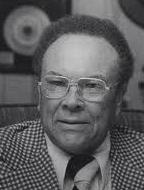
On this day in 1973, Houstonian Don Robey sold Duke-Peacock Records, one of the first nationally-successful black-owned labels, to ABC-Dunhill, bringing an end to an important era in the Texas recording industry. Robey founded Peacock Records in 1949 to promote his featured artist, Clarence “Gatemouth” Brown. In 1952, Peacock merged with Duke Records which added to Robey’s roster R&B musicians such as Junior Parker, Bobby Blue Bland, Big Mama Thornton, and Johnny Ace. Robey’s Duke-Peacock Records helped shaped the sound of early rock ‘n’ roll and left a lasting imprint on American popular music.
Blog: Ron Goodwin, Ph.D., author, PVAMU history professor
Ron Goodwin is an assistant professor of history at Prairie View A&M University. Even though he was a military “brat,” he still considers San Antonio home. Like his father and brother, Ron joined the U.S. Air Force and while enlisted received his undergraduate degree from Texas Lutheran University in Seguin, Texas. After his honorable discharge, he completed graduate degrees from Texas Southern University. Goodwin’s book, Blacks in Houston, is a pictorial history of Houston’s black community. His most recent book, Remembering the Days of Sorrow, examines the institution of slavery in Texas from the perspective of the New Deal’s Slave Narratives.
Recent Posts
It’s OK now
Hopefully, this COVID-19 pandemic will end soon, and life can get back to normal. At the very least, as a society, I hope we’ll learn how to live with it. But one day, our intelligentsias will analyze every governmental action since February and March of 2020, especially those of the President. Recent policies have addressed the numbers of individuals who are out of work because of the “stay at home” directives. It’s been called… (more)
WWJD
Several years ago, these letters, “WWJD?” seemed to be everywhere. We all know they represent “What Would Jesus Do?” I think these letters and the question were meant to challenge society to consider the moral implications of their everyday decisions. Now in this new COVID-19 reality, WWJD may have new meaning. Since my father…(more)
Submissions wanted
Historians, scholars, students, lend us your…writings. Help us produce the most comprehensive documentation ever undertaken for the African American experience in Texas. We encourage you to contribute items about people, places, events, issues, politics/legislation, sports, entertainment, religion, etc., as general entries or essays. Our documentation is wide-ranging and diverse, and you may research and write about the subject of your interest or, to start, please consult our list of suggested biographical entries and see submission guidelines. However, all topics must be approved by TIPHC editors before beginning your research/writing.
We welcome your questions or comments. Please contact Michael Hurd, Director of TIPHC, at mdhurd@pvamu.edu.


